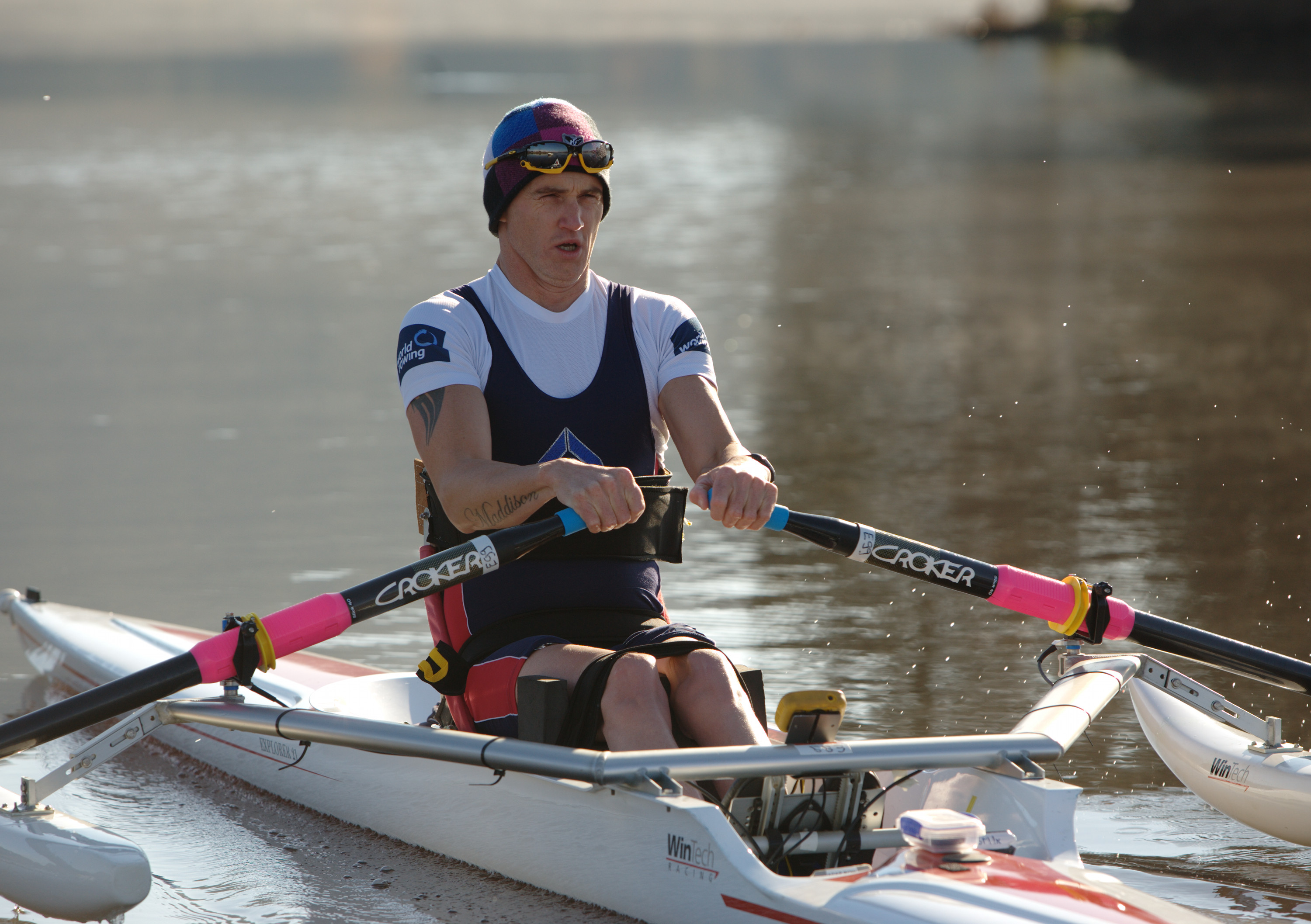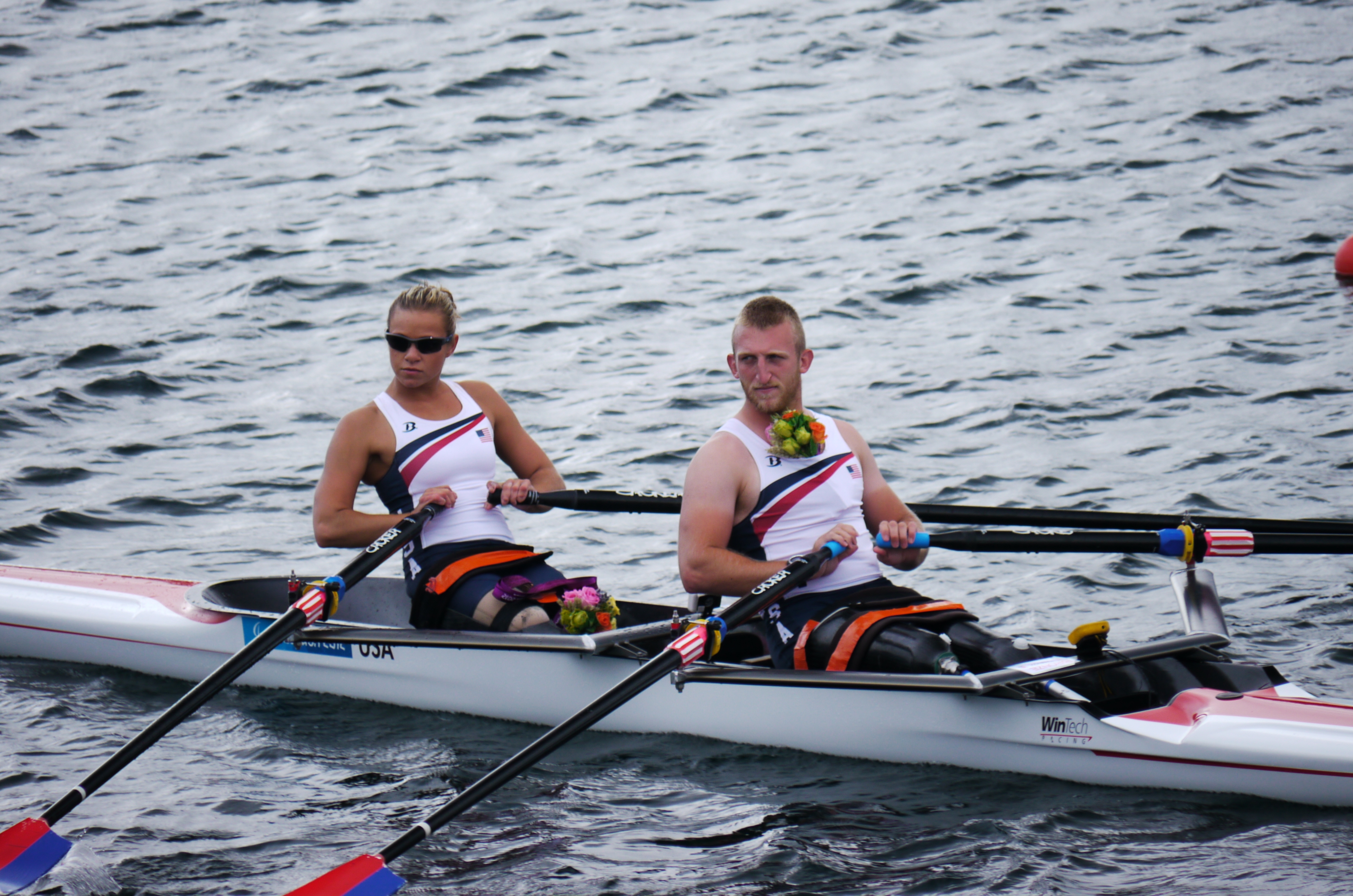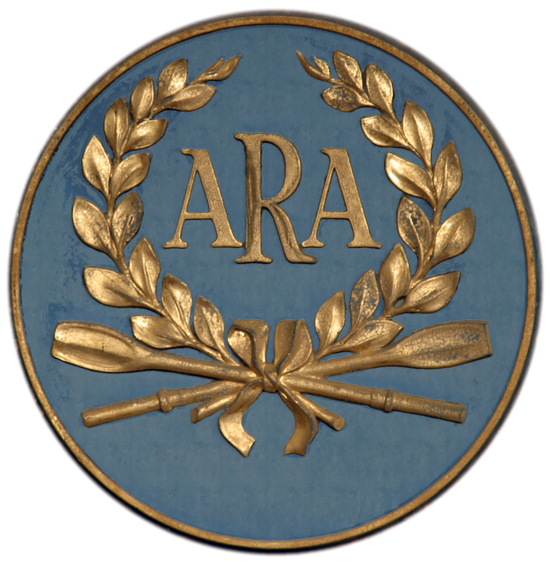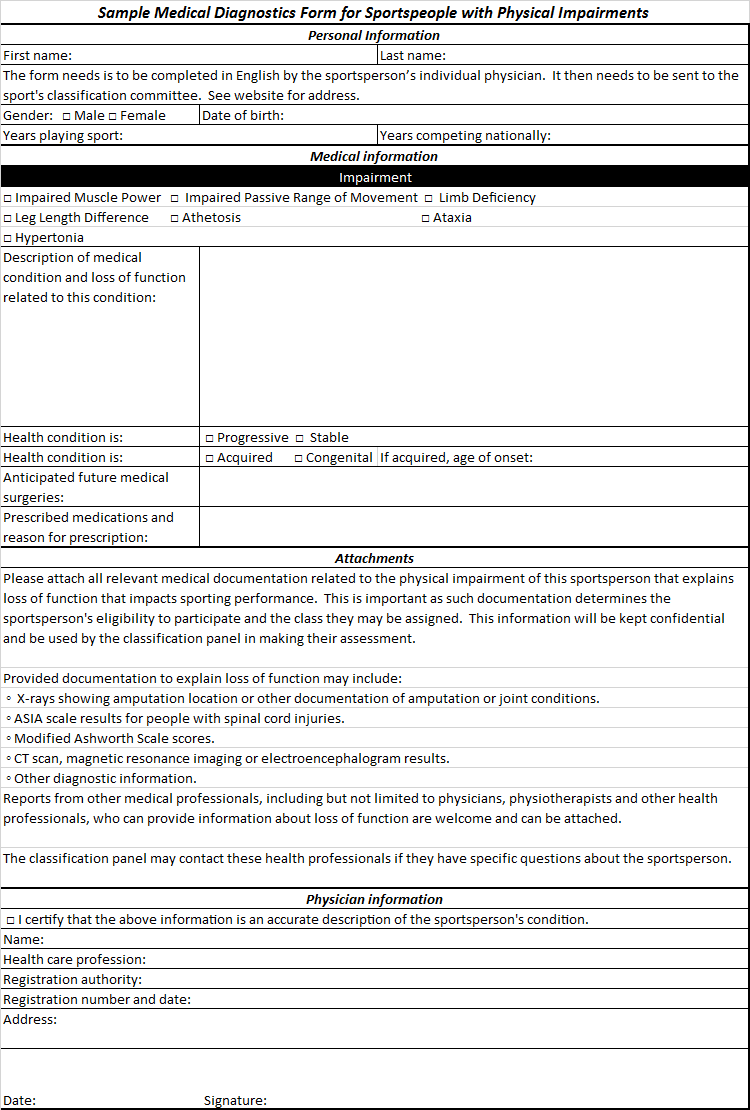|
Adaptive Rowing Classification
Adaptive rowing classification is the classification system used for adaptive rowing. It is based on functional ability and is broken down into three specific classifications. This system is governed by Federation Internationale de Societes d'Aviron. Eligible competitors have a physical or visual disability. Definition Adaptive rowing has three broad classifications based on a rowers functional ability. These classifications are PR1 (previously AS) for arms and shoulders, PR2 (previously TA) for trunk and arm mobility, PR3 (previously LTA) for legs, trunk and arms mobility. There was also previously a mixed boat classification called LTAIDMix4+ which included rowers with intellectual disabilities. Governance The sport is governed by the Federation Internationale de Societes d'Aviron (FISA). Eligibility , people with visual and physical disabilities are eligible to compete in this sport. British Rowing defines two types of rowers with disabilities: * Para-Rowers - are eligible ... [...More Info...] [...Related Items...] OR: [Wikipedia] [Google] [Baidu] |
Adaptive Rowing
Pararowing (or adaptive rowing) is a category of rowing race for those with physical, visual or intellectual disabilities. History In 1913, rowing for individuals with disabilities was initiated by headmaster George Clifford Brown at Worcester College for the Blind in Great Britain. Brown encouraged blind students to participate in particular sports in which they would be able to compete at an equal level to sighted players and do so without modifications. Other organizations dedicated to rehabilitating the blind, such as St. Dunstan's Hostel, started rowing clubs shortly afterwards in 1915. Competitive rowing with blind rowers first began in 1914 between Worcester College and the Old Boys in one race and Worcester College and Worcester Boy Scouts in another race the same year. In October 1945, veterans from the Marines_blinded_during_World_War_II.html" "title="United_States_Marine_Corps.html" "title="United_States_Navy.html" "title="United States Army, United States Navy"> ... [...More Info...] [...Related Items...] OR: [Wikipedia] [Google] [Baidu] |
International Rowing Federation
World Rowing, also known as the World Rowing Federation (former abbreviation FISA; french: Fédération internationale des sociétés d'aviron), is the international governing body for rowing. Its current president is Jean-Christophe Rolland who succeeded Denis Oswald at a ceremony held in Lucerne in July 2014. The World Rowing Cup, World Rowing Championships, and other such competitions are overseen by this organization. History General It was founded by rowing representatives from France, Switzerland, Belgium, Adriatica, and Italy on 25 June 1892 in Turin in response to the growing popularity of the sport of rowing, and the consequent need for uniformity of regulations over such matters as race lengths, boat composition, and weight classes. Also, at the time, betting on rowing was very popular, and the rowers or coaches were themselves often taking bets. Amateur status, whilst widespread in England and elsewhere, was unknown in the sport in many nations, a state of affairs ... [...More Info...] [...Related Items...] OR: [Wikipedia] [Google] [Baidu] |
British Rowing
British Rowing, formerly the Amateur Rowing Association (ARA), is the national governing body for the sport of rowing (both indoor and on-water rowing). It is responsible for the training and selection of individual rowers and crews representing Great Britain and England, and for participation in and the development of rowing in England. Scottish Rowing (formerly SARA) and Welsh Rowing (formerly WARA) oversee governance in their respective countries, organise their own teams for the Home International Regatta and input to the GB team organisation. British Rowing is a member of the British Olympic Association and the World Rowing Federation, also known as FISA. History The ARA (as the predecessor of British Rowing) had it roots in the desire to form crews drawn from the leading English clubs 'for the purpose of defeating the foreign or colonial invader' although in fact this aim was not fulfilled until much later. A series of meetings were held in Putney from 1877 culminating ... [...More Info...] [...Related Items...] OR: [Wikipedia] [Google] [Baidu] |
Disability Sport Classification
Disability sports classification is a system that allows for fair competition between people with different types of disabilities. Historically, the process has been overseen by 2 groups: specific disability type sport organizations that cover multiple sports, and specific sport organizations that cover multiple disability types including amputations, cerebral palsy, deafness, intellectual impairments, les autres and short stature, vision impairments, spinal cord injuries, and other disabilities not covered by these groups. Within specific disability types, some of the major organizations have been: CPISRA for cerebral palsy and head injuries, ISMWSF for spinal cord injuries, ISOD for orthopaedic conditions and amputees, INAS for people with intellectual disabilities, and IBSA for blind and vision impaired athletes. Amputee sports classification is a disability specific sport classification used for disability sports to facilitate fair competition among people with different types ... [...More Info...] [...Related Items...] OR: [Wikipedia] [Google] [Baidu] |
Stichting Roeivalidatie
A ''stichting'' () is a Dutch legal entity with limited liability, but no members or share capital, that exists for a specific purpose. This form of entity makes it possible to separate functions of ownership and control. Its use has been pioneered successfully in recent years as a ' poison pill' style defence tactic in hostile takeover situations by Scott V Simpson, one of Europe's leading mergers and acquisitions lawyers. Formation A ''stichting'' is a legal person created through a legal act. This act is usually either a notarised deed (or a will) that contains the articles of the foundation which must include the first appointed board. No government authority is involved in the creation or authorization of a foundation. It acquires full legal capacity through its sole creation. A foundation has no members and its purpose must be stated in its articles, using capital dedicated to such goal. The foundations are defined in the Dutch Civil Code (Burgerlijk Wetboek), Boek 2 Art 285-3 ... [...More Info...] [...Related Items...] OR: [Wikipedia] [Google] [Baidu] |
B1 (classification)
B1 is a medical-based Paralympic classification for blind sport. Athletes in this classification are totally or almost totally blind. It is used by a number of blind sports including blind tennis, para-alpine skiing, para-Nordic skiing, blind cricket, blind golf, five-a-side football, goalball and judo. Some other sports, including adaptive rowing, athletics and swimming, have equivalents to this class. The B1 classification was first created by the IBSA in the 1970s, and has largely remained unchanged since despite an effort by the International Paralympic Committee (IPC) to move towards a more functional and evidence-based classification system. Classification is often handled on the international level by the International Blind Sports Federation (IBSA) but it sometimes handled by national sport federations. There are exceptions for sports like athletics and cycling, where classification is handled by their own governing bodies. Equipment utilized by competitors in this cl ... [...More Info...] [...Related Items...] OR: [Wikipedia] [Google] [Baidu] |
B2 (classification)
B2 is a medical based Paralympic classification for blind sport. Competitors in this classification have vision that falls between the B1 and B3 classes. The International Blind Sports Federation (IBSA) defines this classification as "visual acuity ranging from LogMAR 1.50 to 2.60 (inclusive) and/or visual field constricted to a diameter of less than 10 degrees." It is used by a number of blind sports including para-alpine skiing, para-Nordic skiing, blind cricket, blind golf, five-a-side football, goalball and judo. Some sports, including adaptive rowing, athletics and swimming, have equivalents to this class. The B2 classification was first created by the IBSA in the 1970s, and has largely remained unchanged since despite an effort by the International Paralympic Committee (IPC) to move towards a more functional and evidence-based classification system. Classification is often handled on the international level by IBSA although it is also handled by national sport feder ... [...More Info...] [...Related Items...] OR: [Wikipedia] [Google] [Baidu] |
B3 (classification)
B3 is a medical based Paralympic classification for blind sport. Competitors in this classification have partial sight, with visual acuity from 2/60 to 6/60. It is used by a number of blind sports including para-alpine skiing, para-Nordic skiing, blind cricket, blind golf, five-a-side football, goalball and judo. Some other sports, including adaptive rowing, athletics and swimming, have equivalents to this class. The B3 classification was first created by the IBSA in the 1970s, and has largely remained unchanged since despite an effort by the International Paralympic Committee (IPC) to move towards a more functional and evidence-based classification system. Classification is often handled on the international level by the International Blind Sports Association (IBSA) although it is also handled by national sport federations. There are exceptions for sports like athletics and cycling. Equipment utilized by competitors in this class may differ from sport to sport, and may inc ... [...More Info...] [...Related Items...] OR: [Wikipedia] [Google] [Baidu] |
LTA-B1
LTA-B1 is an adaptive rowing classification. The classifications were developed and current as of March 2011. Definition Rowing Australia defines this classification as "athletes with a visual impairment (LTA-B1, LTA-B2 and LTA-B3)" Events Rowers in this classification compete in single and sculls for club, state, and national competitions. In international competitions, they compete in mixed cox fours sculls, with a maximum of two visually impaired rowers in the boat. Becoming classified Classification is handled by FISA – International Rowing Federation. Australians seeking classification through Rowing Australia as a visually impaired rower need to provide evidence of having been classified by an International Blind Sports Federation (IBSA) classifier or an Australian Paralympic Committee vision impairment classifier. See also * Adaptive rowing * Adaptive rowing classification * Rowing at the 2008 Summer Paralympics * Rowing at the 2012 Summer Paralympics Ro ... [...More Info...] [...Related Items...] OR: [Wikipedia] [Google] [Baidu] |
LTA-B2
LTA-B2 is an adaptive rowing classification. The classifications were developed and current as of March 2011. Definition Rowing Australia defines this classification as "athletes with a visual impairment (LTA-B1, LTA-B2 and LTA-B3)" Events Rowers in this classification compete in single and sculls for club, state, and national competitions. In international competitions, they compete in mixed cox fours sculls, with a maximum of two visually impaired rowers in the boat. At the Paralympic Games For the 2016 Summer Paralympics in Rio, the International Paralympic Committee had a zero classification at the Games policy. This policy was put into place in 2014, with the goal of avoiding last minute changes in classes that would negatively impact athlete training preparations. All competitors needed to be internationally classified with their classification status confirmed prior to the Games, with exceptions to this policy being dealt with on a case-by-case basis. Becoming classi ... [...More Info...] [...Related Items...] OR: [Wikipedia] [Google] [Baidu] |
LTA-B3
LTA-B3 is an adaptive rowing classification. The classifications were developed and current as of March 2011. Definition Rowing Australia defines this classification as "athletes with a visual impairment (LTA-B1, LTA-B2 and LTA-B3)" Events Rowers in this classification compete in single and sculls for club, state, and national competitions. In international competitions, they compete in mixed cox fours sculls, with a maximum of two visually impaired rowers in the boat. At the Paralympic Games For the 2016 Summer Paralympics in Rio, the International Paralympic Committee had a zero classification at the Games policy. This policy was put into place in 2014, with the goal of avoiding last minute changes in classes that would negatively impact athlete training preparations. All competitors needed to be internationally classified with their classification status confirmed prior to the Games, with exceptions to this policy being dealt with on a case-by-case basis. Becoming classi ... [...More Info...] [...Related Items...] OR: [Wikipedia] [Google] [Baidu] |





